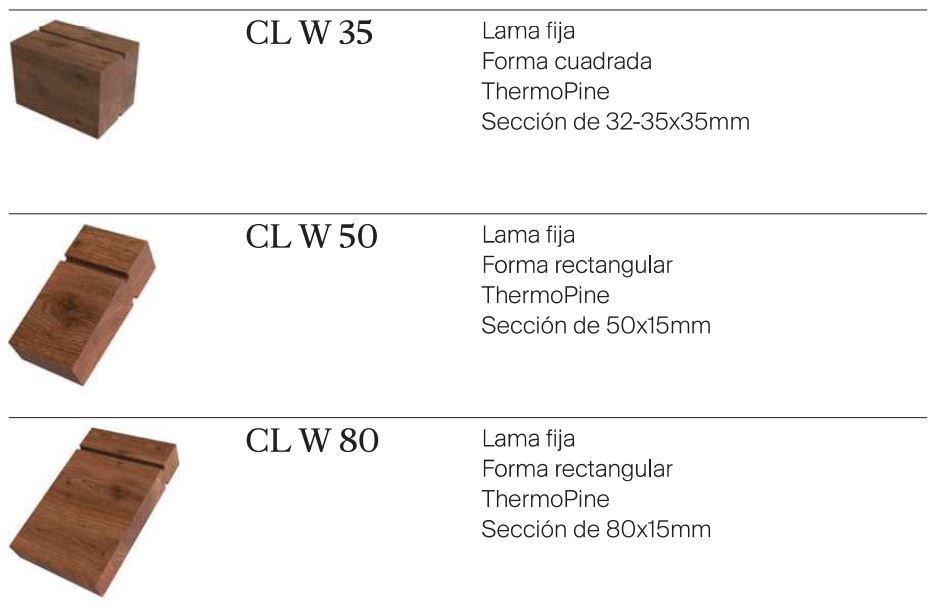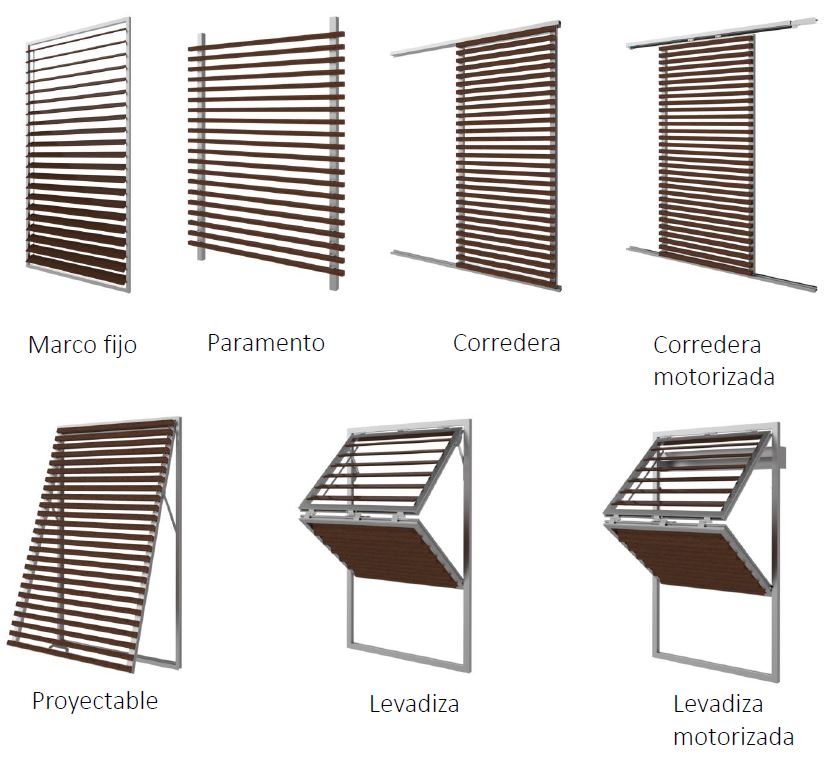Gradhermetic Gradpanel System with Finsa Thermopine: Heat-treated pine lattices for solar control
The collaboration between the two companies has resulted in a solution that won an award at Rebuild's Advanced Architecture Awards 2020 for being "sustainable, industrialized, low environmental impact and recyclable"
The collaboration between Finsa, a manufacturer of wood solutions, and Gradhermetic, a company specializing in technical and decorative solutions for solar protection and façade cladding, has led to the Gradpanel system with Savia Thermopine. This provides the construction sector with a sustainable, recyclable façade system that has a low environmental impact, combining recycled second-melt aluminium elements with decorative pieces of heat-treated pine: a stable, durable wood with no chemical additives.
This system is the result of a close collaboration between the two companies, Finsa and Gradhermetic. This cooperation is also continued by the technical teams of both companies, who are available to support architects right from the preliminary design phase. In addition, both companies are working on the families of the different system applications in BIM, which are being developed by Modelical.
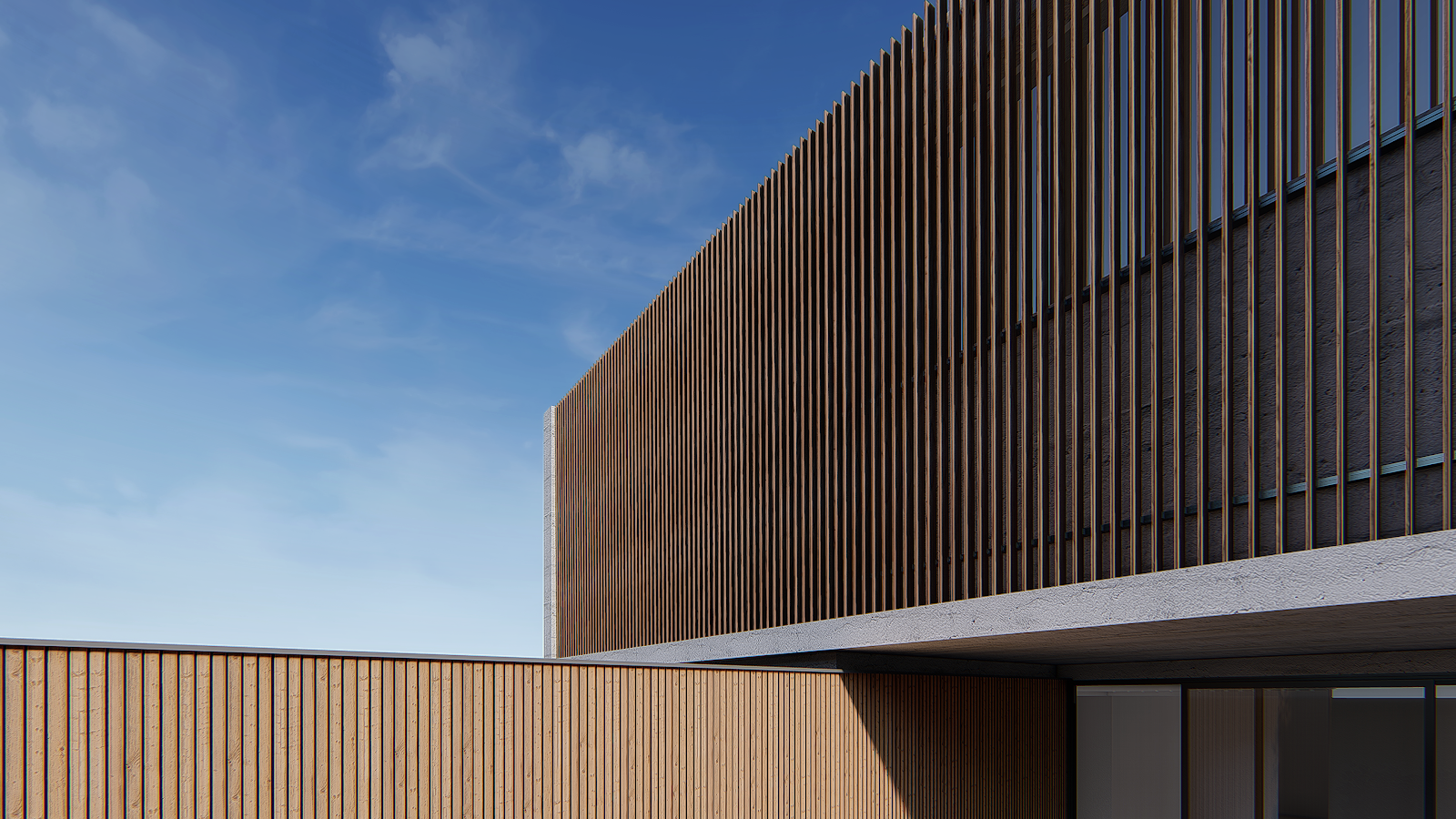
Energy saving is an architectural necessity that is here to stay, as a philosophy for life, and for understanding our relationship with resources. Gradpanel allows for protection from strong solar radiation, generating natural ventilation and thus avoiding high energy consumption due to the inappropriate use of artificial cooling.
In winter, adjustment of the slats reduces heating consumption, since during the day the slats can be opened, increasing solar energy collection inside the building. During the night, the slats are closed, helping to maintain the interior temperature.
In summer, the slats are oriented in such a way as to prevent the sun's rays from shining into the building, thus maintaining a pleasant room temperature and achieving substantial savings in air conditioning. During the night, opening slats and windows allows for air circulation, again reducing the need for air conditioning.
Gradhermetic solar protections are architectural elements designed to protect the building from solar radiation, while also ensuring that the internal environment receives natural light. They also optimise the use of energy resources by reducing electricity, heating and cooling demand, to a greater or lesser extent. Defined as Passive Façades, they are the second skin of the building, capable of interacting with the environment through bioclimatic strategies. They can be used as fixed slats, only guaranteeing shielding from the sun's rays at certain times of the day as the slats follow a predefined angle, or as adjustable slats, allowing the user to regulate the light level inside the building, improving visual comfort and thus offering increased thermal and visual efficiency throughout the day.
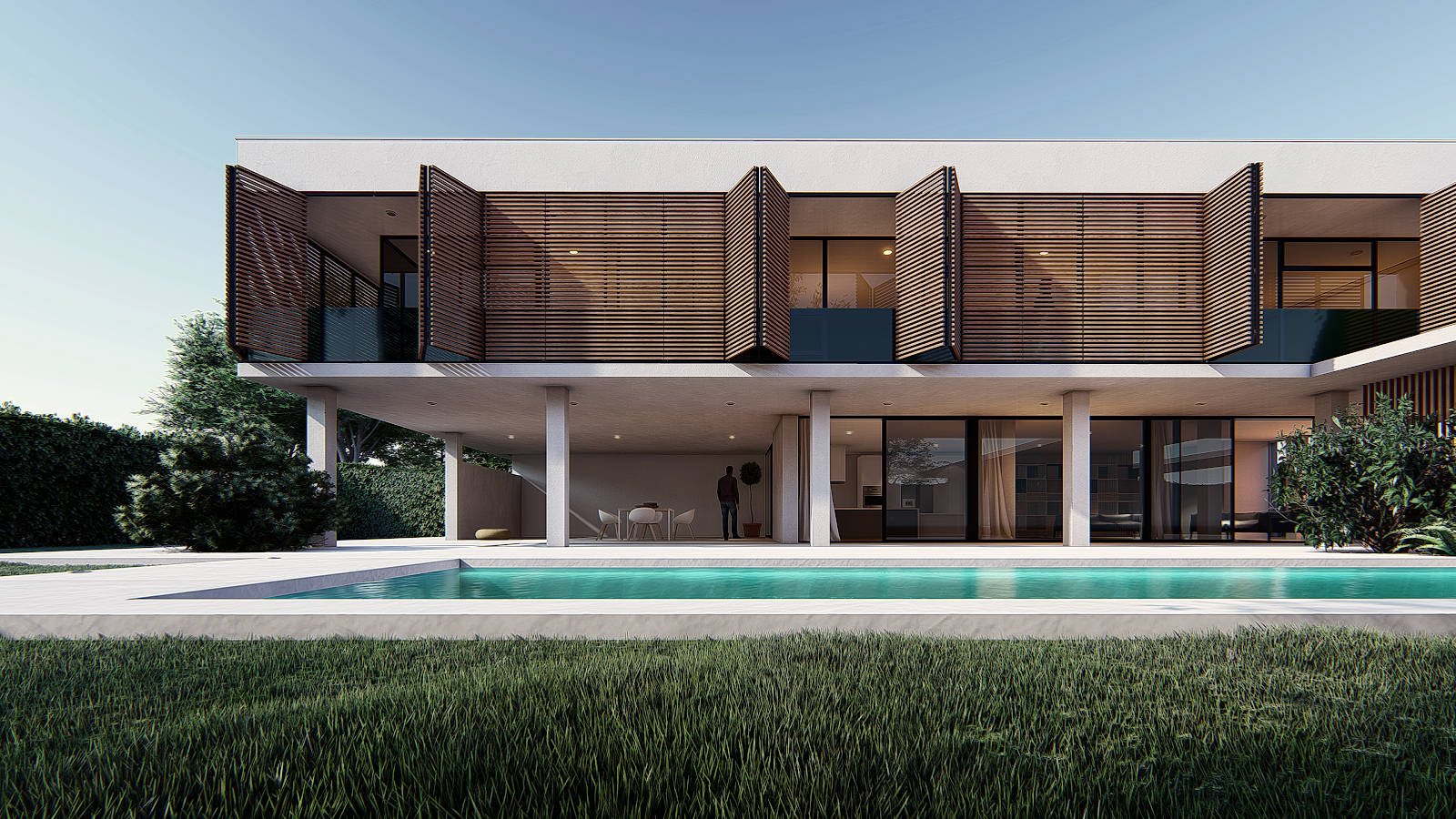
El ahorro energético es una necesidad en arquitectura que ha llegado para quedarse como filosofía de vida y de entender nuestra relación con los recursos. Gradpanel permite la protección de la fuerte radiación solar, generando ventilación natural, y evitando así un gran consumo de energía por el uso inapropiado de refrigeración artificial.
En invierno, la regulación de las lamas disminuye el consumo en calefacción, ya que durante el día con la apertura de lamas aumenta la captación de energía solar hacia el interior del edificio. Durante la noche, con el cierre de lamas, ayudamos a mantener la temperatura interior.
En verano, las lamas se orientan de modo que impiden el paso de los rayos solares hacia el interior del edificio, lo cual permite mantener una agradable temperatura ambiente, consiguiendo un sustancial ahorro en aire acondicionado. Durante la noche, la apertura de lamas y ventanas permite la circulación de aire, reduciendo otra vez las necesidades de aire acondicionado.
The materials used in the system offer a durable heat-treated pine wood cladding that has a minimal carbon footprint which, together with Gradhermetic's recycled aluminium substructure, allows a skin to be designed for buildings that has a low environmental impact. We have made a qualitative leap, providing the building with a skin that reduces the solar gains of the building in areas that are excessively exposed to the sun. This increases the energy savings of the building by reducing the energy required for air-conditioning in summer and winter, thanks to the various applications of the system.
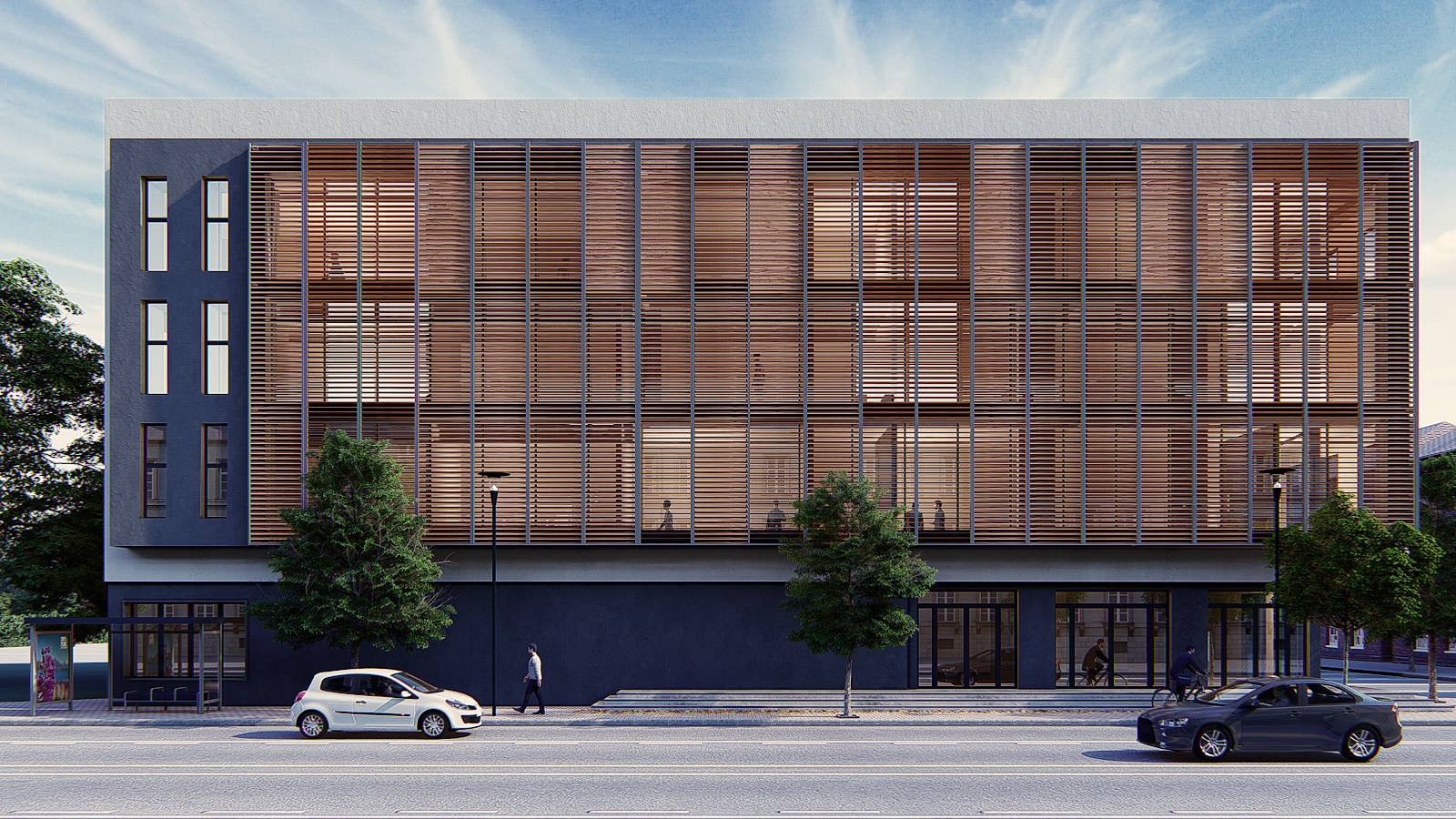
System wins an award at Rebuild's Advanced Architecture Awards 2020
The collaboration between Finsa and Gradhermetic received recognition at the Advanced Architecture Awards 2020, presented during Rebuild, which ran from September 29 to October 1 at the CCIB in Barcelona. The Gradpanel system received the Baxi Award for Product, Material or System Innovation, and the jury valued the fact that Finsa and Gradhermetic, with their heat-treated pine lattices for solar control, "are providing the construction sector with a sustainable, industrialized, low environmental impact, recyclable façade system, favouring the decarbonization and circularity of materials".
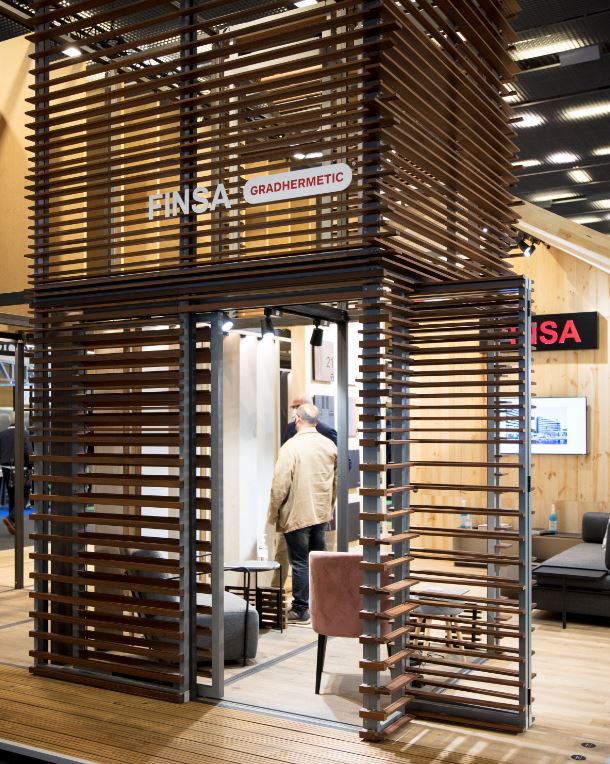
The Gradpanel system is made from heat-treated pine and recycled second-melt aluminium; materials that are 100% recyclable and 100% circular. Consuming wood products contributes positively to the maintenance and growth of forests, as a result of forestry processes. In addition, each m3 of wood used as a substitute for another material can reduce CO2 emissions into the atmosphere by a total of 2 tons. It is also our responsibility to guarantee development based on renewal of resources and protection of the environment. That is why we actively promote the use of wood from PEFC forests, which is a certification that guarantees sustainable forest management.
Heat-treated wood is a sustainable, economical and environmentally friendly solution for outdoor wood, due to fact that chemicals are not used in the treatment, but rather an innovative process that gives the wood high performance. The treatment is carried out by putting the material in a chamber with an oxygen-free atmosphere at high temperatures for several hours.
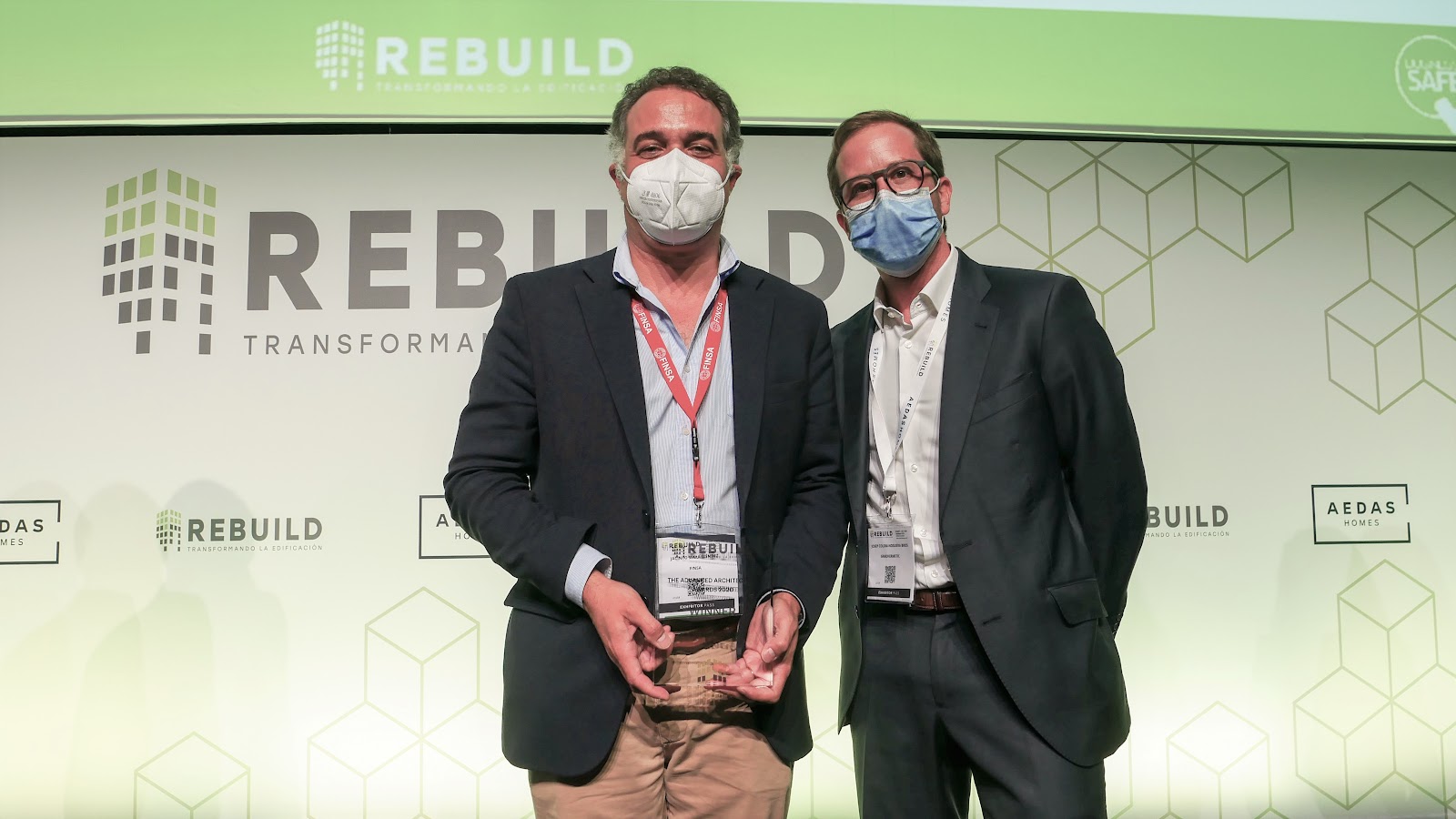
The heat treatment produces less moisture exchange, making ThermoPine a wood with a dimensional stability that is up to 75% better than untreated wood. This allows it to perform better outdoors, minimizing movement of the parts during their service life. It also modifies the structure of the wood, creating new molecules that prevent fungi from degrading it. This makes ThermoPine a product that is suitable for outdoor use.
The Gradpanel system with Thermopine also helps in obtaining credits for LEED, BREAAM and VERDE, from the point of view of the system's energy savings and low environmental impact, thanks to the materials it is composed of. In addition, this solution brings beauty and functionality to building façades, due to the elegance of the different systems, which convey different atmospheres depending on the status of the position of each application. The engineering on which each application is based makes it the perfect solution, providing the people who live in the buildings with a better quality of life.
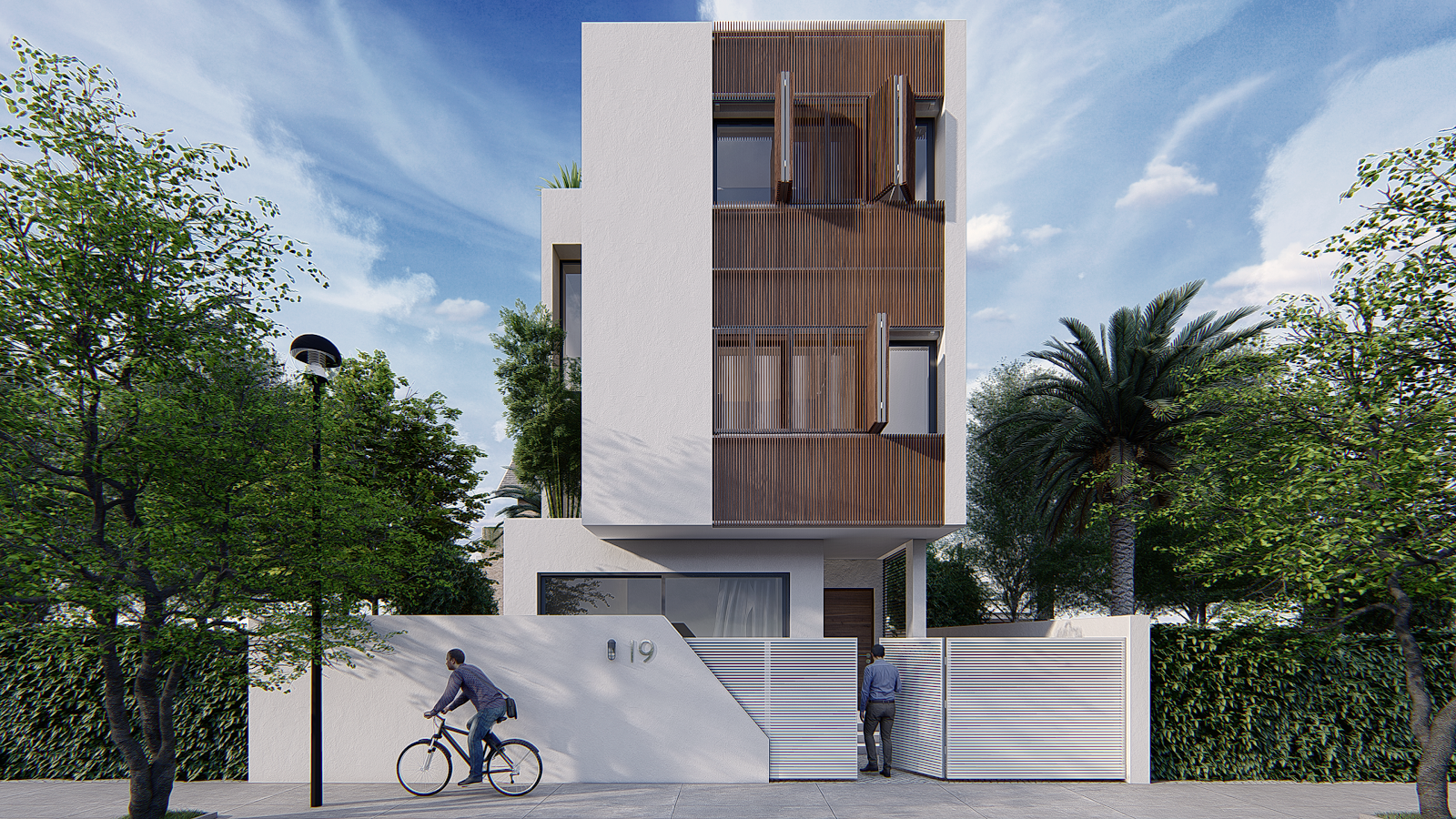
El tratamiento térmico produce un menor intercambio de humedad, que hacen del ThermoPine una madera con una estabilidad dimensional que mejora hasta en un 75 % la madera sin tratar. Esto provoca un mejor comportamiento en el exterior, minimizando los movimientos de las piezas durante su vida en servicio. Asimismo, se modifica la estructura de la madera originando moléculas nuevas que hacen que los hongos no la degraden, haciendo del ThermoPine un producto apto para exterior.
El sistema Gradpanel con Thermopine también ayuda a la obtención de créditos para LEED, BREAAM y VERDE, desde un punto de vista de ahorro energético como sistema y de bajo impacto ambiental por los materiales que lo componen. Además, esta solución aporta belleza y funcionalidad a las fachadas de los edificios, gracias a la elegancia de los diferentes sistemas, que transmiten diferentes ambientes dependiendo del estado de la posición de cada aplicación. La ingeniería en la que está basada cada aplicación la convierten en la solución perfecta, aportando a las personas que viven en los edificios una mayor calidad de vida.
